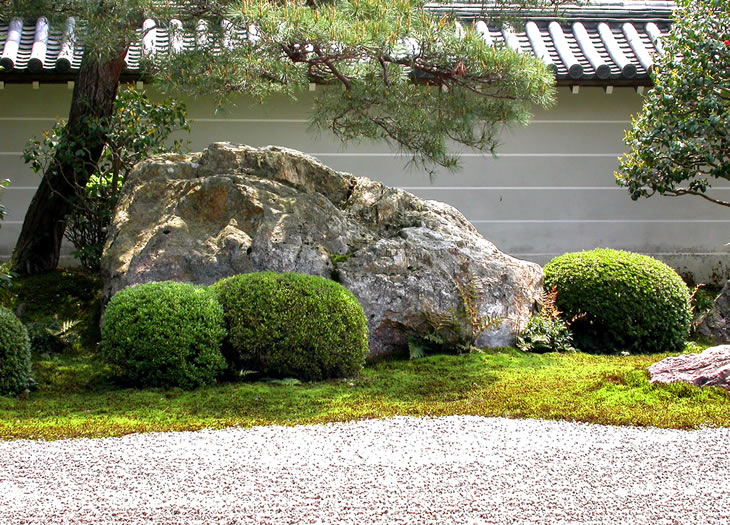Nanzen-ji is the head temple of Nanzenji school in Buddhism and located east of Kyoto. The temple was built for emperor Kameyama in 1291. The temple is built so the royals protect the country by Buddhism spirit.
Garden


You will see 6m high the Japanese biggest stone lantern in front of the front gate. The view from there is called “one million ryo view” – ryo is denomination used in old days in Japan, so we can describe the view as “one million dollar view”.
In spring, cherries, sakura, are beautiful and maples are beautiful in autumn.
Zen garden


The dry scape garden is called Hojo-teien, designed by Kohori enshu (小堀遠州) around the beginning of the 17th century and is one of the most significant dry scape garden in Japan as well as Ryoan-ji.
White sand in the zen garden represents water and river and rocks represent tigers.
Hill-and-pond garden

The temple also has a hill-and-pond garden. The garden is said to be designed by the emperor Kameyama (亀山天皇). The size of the garden is 1, 750m2 and there is a pond in the south east of the garden. Water falls from the pond.
Garden of luckiness

In Konji-in (金地院), there are zen garden and hill-and-pond garden. The zen garden is called Tsuru-Kame-no-niwa, which literally means “crane island and turtle island”. In Japan, crane and turtle mean luckiness.
Photos By john weiss, Aleksander Dragnes and joevare
